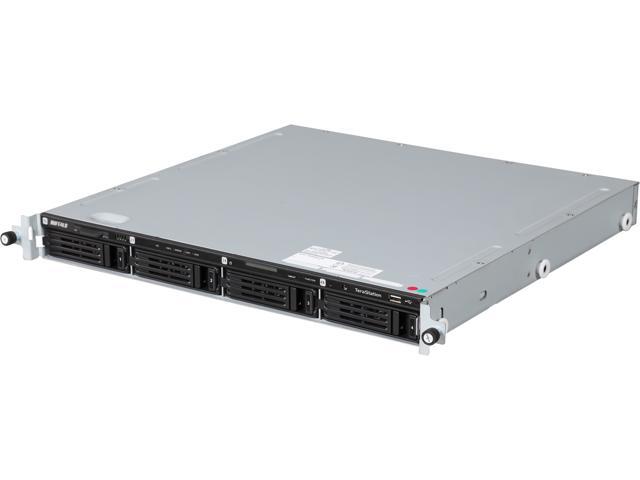Buffalo’s TeraStation Pro II iSCSI is a storage solution targeted at the SMB. This affordable storage system utilizes existing Ethernet infrastructure to communicate SCSI storage commands over the network. The TeraStation Pro II iSCSI is the ideal solution to back up your servers more efficiently, consolidate your existing storage systems, and increase redundancy and data security. Setup multiple iSCSI units into one single storage array in Windows or segment an existing array for dedicated PCs or servers. At an affordable price, the Buffalo TeraStation Pro II iSCSI system is the ideal entry into the SAN market. TeraStation Pro II iSCSI is available in pedestal (TS-IGL/R5) and 2U rackmount (TS-RIGL/R5) form factors allowing its use in a number of small business environments.
- Buffalo Scsi & Raid Devices Driver Download For Windows 10 Download
- Buffalo SCSI & RAID Devices Driver Download For Windows 10
- Buffalo Scsi & Raid Devices Driver Download For Windows 10 64-bit
Company Size
- S
- M
- L
Buffalo Scsi & Raid Devices Driver Download For Windows 10 Download
BBB accredited since 9/24/2007. Collections Agencies in Madison, WI. See BBB rating, reviews, complaints, request a quote & more.
- Trusted Windows (PC) download BUFFALO iSCSI Hard Disk Connection Tool 1.5.5. Virus-free and 100% clean download. Get BUFFALO iSCSI Hard Disk Connection Tool alternative downloads.
- Part.1 Connecting iSCSI target with Windows iSCSI initiator 1. To launch the iSCSI initiator in Windows 7, please go to Control Panel Administrative Tools. On the iSCSI Initiator Properties page, click on Discovery, enter the IP address of.
- Intel Raid 1 Volume SCSI Disk Device - Driver Download. Vendor:. Product: Intel Raid 1 Volume SCSI Disk Device. Hardware Class: DiskDrive. Windows 7 32-Bit Driver. Total Driver Versions: 1. Recommended Driver. Driver Date:: Release Notes: Driver.
IT Pro Reviews of Buffalo Americas, Inc TS-IGL/R5
- AMD processor
- ARM processor
- All-flash array
- Backup for virtualization
- Deduplication
- Gigabit Ethernet
- HAMR
- HDD
- Hybrid cloud backup
- Hybrid flash array
- Intel processor
- IoT compatible
- JBOD
- MAMR
- NVDIMM
- NVMe
- NVRAM
- RAID 0
- RAID 1
- RAID 10
- RAID 5
- SAS SSD
- SATA SSD
- Scale-out storage
Starting with Windows 10, Version 2004 (OS build 19041.488 or higher), two additional identifiers are available for NVMe storage disk drives which support the STOR_RICH_DEVICE_DESCRIPTION structure:
SCSIt*v(8)p(40)
Where:
t* is a device type code of variable length
v(8) is an 8-character vendor identifier
p(40) is a 40-character product identifier

SCSIt*v(8)p(40)r(8)
Where:
t* is a device type code of variable length
v(8) is an 8-character vendor identifier
p(40) is a 40-character product identifier
r(8) is an 8-character revision level value
In versions of Windows prior to Windows 10, Version 2004 (OS build 19041.488 or higher), the device ID format for a small computer system interface (SCSI) device is as follows:
SCSIt*v(8)p(16)r(4)
Where:
t* is a device type code of variable length
v(8) is an 8-character vendor identifier
p(16) is a 16-character product identifier
r(4) is a 4-character revision level value
Buffalo SCSI & RAID Devices Driver Download For Windows 10
The bus enumerator determines the device type by indexing an internal string table, using a numerically encoded SCSI device type code, obtained by querying the device, as shown in the following table. The remaining components are just strings returned by the device, but with special characters (including space, comma, and any nonprinting graphic) replaced with an underscore.
The SCSI Port driver currently returns the following device type strings, the first nine of which correspond to standard SCSI type codes.
| SCSI type code | Device type | Generic type | Peripheral ID |
|---|---|---|---|
| DIRECT_ACCESS_DEVICE (0) | Disk | GenDisk | DiskPeripheral |
| SEQUENTIAL_ACCESS_DEVICE (1) | Sequential | TapePeripheral | |
| PRINTER_DEVICE (2) | Printer | GenPrinter | PrinterPeripheral |
| PROCESSOR_DEVICE (3) | Processor | OtherPeripheral | |
| WRITE_ONCE_READ_MULTIPLE_DEVICE (4) | Worm | GenWorm | WormPeripheral |
| READ_ONLY_DIRECT_ACCESS_DEVICE (5) | CdRom | GenCdRom | CdRomPeripheral |
| SCANNER_DEVICE (6) | Scanner | GenScanner | ScannerPeripheral |
| OPTICAL_DEVICE (7) | Optical | GenOptical | OpticalDiskPeripheral |
| MEDIUM_CHANGER (8) | Changer | ScsiChanger | MediumChangerPeripheral |
| COMMUNICATION_DEVICE (9) | Net | ScsiNet | CommunicationsPeripheral |
| 10 | ASCIT8 | ScsiASCIT8 | ASCPrePressGraphicsPeripheral |
| 11 | ASCIT8 | ScsiASCIT8 | ASCPrePressGraphicsPeripheral |
| 12 | Array | ScsiArray | ArrayPeripheral |
| 13 | Enclosure | ScsiEnclosure | EnclosurePeripheral |
| 14 | RBC | ScsiRBC | RBCPeripheral |
| 15 | CardReader | ScsiCardReader | CardReaderPeripheral |
| 16 | Bridge | ScsiBridge | BridgePeripheral |
| 17 | Other | ScsiOther | OtherPeripheral |
An example of a device ID for a disk drive would be as follows:
SCSIDiskSEAGATE_ST39102LW_______0004
There are four hardware IDs in addition to the device ID:
SCSIt*v(8)p(16)
SCSIt*v(8)
SCSIv(8)p(16)r(1)
V(8)p(16)r(1)
In the third and fourth of these additional identifiers, r(1) represents just the first character of the revision identifier. These hardware IDs are illustrated by the following examples:
SCSIDiskSEAGATE_ST39102LW_______
SCSIDiskSEAGATE_
SCSIDiskSEAGATE_ST39102LW_______0
Buffalo Scsi & Raid Devices Driver Download For Windows 10 64-bit
SEAGATE_ST39102LW_______0
The SCSI Port driver supplies only one compatible ID, one of the variable-sized generic type codes from the previous table.
For example, the compatible ID for a disk drive is as follows:
GenDisk
The generic identifier is used in INF files for SCSI devices more than any other, because SCSI drivers are typically generic.

Be aware that the SCSI Port driver returns no generic name for sequential access and 'processor' devices.